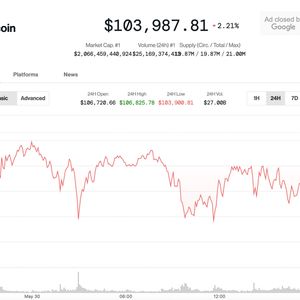Key Takeaways: Domestic adoption of the e-rupee hinges on utility, not subsidies. E-rupee usage dropped 90% after subsidies ended, exposing weak demand. Private fintechs like Mintoak are outpacing the RBI by equipping banks with CBDC infrastructure ahead of the mandate. India’s digital rupee is charging onto the global stage, but back home, it’s fighting for survival. The RBI just launched cross-border CBDC pilots, riding a 334% surge in circulation. Yet when subsidies vanished, domestic usage collapsed by 90%, exposing a harsh truth: without incentives, adoption crumbles. Daily transactions now crawl at just 100,000, forcing the central bank to scramble for solutions. #RBIAnnualReport | The @RBI plans to expand the scope of its #CBDC pilots for both retail (e₹-Retail) and wholesale (e₹-Wholesale) segments, and also introduce new use cases and features for the #DigitalRupee @PihuYadav05 | #RBI #Rupee https://t.co/biLvVZrgwX — CNBC-TV18 (@CNBCTV18News) May 29, 2025 Why Subsidies Failed to Sustain India’s Digital Rupee Banks briefly met the RBI’s ambitious target of one million daily retail transactions in December 2023, fueled by cash-back incentives and digital rupee salary payouts. When the rewards disappeared, transaction volumes plummeted, revealing the gap between artificial demand and true adoption. The challenge is undeniable. By June 2024, cumulative retail payments barely crossed one million, a drop in the ocean for a market handling billions of Unified Payments Interface (UPI) transactions every day. Now, the RBI is staking its future on international utility. Its strategy focuses on building controlled-volume corridors with key partners before expanding into multilateral settlement networks. If successful, Indian businesses could settle trade invoices instantly in a central bank digital currency (CBDC), thereby reducing fees and eliminating intermediaries, such as correspondent banks. However, private players aren’t standing still. For example, major player Mintoak, backed by PayPal, spent $3.5 million to acquire Digiledge , India’s first CBDC acquisition. This purchase equips major banks, such as HDFC, Axis, and SBI, with an e-rupee payment infrastructure. @MintoakIndia cracks India's first e-rupee related deal by acquiring Digiledge, which specializes in central bank digital currency space (CBDC) & bill payments services. The deal will enable Mintoak's partner banks to offer comprehensive CBDC-related payment solutions. pic.twitter.com/kcdEZWx7xW — Young Turks (@CNBCYoungTurks) March 4, 2025 The RBI’s gamble hinges on two key factors. One is making India’s digital rupee indispensable in cross-border trade. The second factor is integrating the digital rupee more deeply into banking systems, without relying on subsidies for survival. Blackouts, Bans, and Delays: The Global CBDC Reality Check Governments are making big bets on digital currencies issued by central banks (CBDCs) to upgrade payment systems, but their approaches vary widely. In Washington, the House Financial Services Committee advanced the Anti-CBDC Surveillance State Act (H.R. 1919), which would bar the Federal Reserve from issuing digital dollars to consumers. Supporters, led by Tom Emmer, argue that private digital coins like stablecoins encourage innovation without government control. H.R. 1919, the Anti-CBDC Surveillance State Act passed Committee 27-22. pic.twitter.com/CgfoqMn9Eo — Financial Services GOP (@FinancialCmte) April 3, 2025 China is racing ahead. A new program in Zhejiang Province will integrate the digital yuan into shopping malls and store openings until 2027. Officials hope people will start using it naturally when paying for everyday items. Russia, however, lags behind. Alexey Voylukov of the Presidential Academy now predicts the digital ruble won’t be available until late 2026, with a full launch delayed until 2027 . He warns that QR-code payments will flounder unless mobile networks improve and incentives grow stronger. Europe confronts a different obstacle: unreliable power. The blackouts across Spain and Portugal are bad news for central bank digital currencies and stablecoins… but good news for cash #CBDCs #DigitalEuro https://t.co/MTlXFb7fwm — Cryptonews.com (@cryptonews) April 29, 2025 A major power outage in Spain and Portugal in April left card machines and ATMs useless. This raises concerns about whether a digital euro would work during such failures. Although the ECB vows to offer offline capabilities, only 45% of surveyed citizens express a willingness to use them. While many countries are excited about CBDCs, real challenges, such as weak infrastructure, technical issues, and low public interest, could hinder their widespread adoption. Can India Fix Its Crypto Exodus With Friendlier Rules? India may soon introduce clearer, more supportive regulations for its cryptocurrency market, which is projected to reach $15 billion by 2035. The country’s Supreme Court recently questioned why the government still lacks proper crypto rules , comparing Bitcoin trading to Hawala, an informal, trust-based money transfer system. (Shailesh Babulal Bhatt v. State of Gujarat & Another) Justice Kant: In one of the matter, almost two years back, I made an observation and called upon learned Attorney General that are you doing something to regulate this crypto currency? He came and said that we can't.… pic.twitter.com/OTcDVdlPbf — Bar and Bench (@barandbench) May 19, 2025 Justices Surya Kant and N. Kotiswar Singh, who first raised the issue two years ago, argued that smart regulation, rather than an outright ban, would help prevent illegal transactions. They also pointed out that India’s existing 30% tax on crypto profits already gives it unofficial recognition. However, high taxes have driven traders away. Since 2022, a 30% capital gains tax and a 1% transaction fee have pushed over 90% of Indian crypto trading offshore. Now, industry leaders are lobbying for lower rates (0.1%) and clearer rules to bring business back. With global crypto rules becoming more welcoming, Indian authorities might be open to discussion. 𝐈𝐍𝐃𝐈𝐀 𝐂𝐎𝐍𝐒𝐈𝐃𝐄𝐑𝐈𝐍𝐆 𝐂𝐑𝐘𝐏𝐓𝐎 𝐓𝐀𝐗 𝐑𝐄𝐋𝐈𝐄𝐅? From 2 meetings a year to 1 every month—India’s crypto leaders are turning up the heat. Push to cut 30% tax & remove 1% TDS is gaining heat. Even RBI’s tone has softened. pic.twitter.com/RAF7xwWDYt — Sapna Singh (@earnwithsapna) May 27, 2025 Encouraged by this change, major players like Binance and Coinbase are re-entering India. Industry experts believe that with lighter regulations, the domestic crypto market could grow from $2.5 billion today to $15 billion by 2035. Frequently Asked Questions (FAQs) Which countries will test CBDC corridors with India first? Partners are likely to be major trade counterparts with active CBDC projects, such as the UAE, Singapore, or nations within the Asian Clearing Union, who prioritize efficient trade settlement. How does the e-rupee’s technology differ from existing payment platforms? The e-rupee utilizes distributed ledger technology (DLT), such as blockchain, for secure token issuance and settlement, which is fundamentally different from UPI’s real-time interbank messaging system that facilitates existing bank account transfers. The post India’s Central Bank to Introduce Features for Digital Rupee Pilot and Test Cross-Border Payment: Report appeared first on Cryptonews .



















